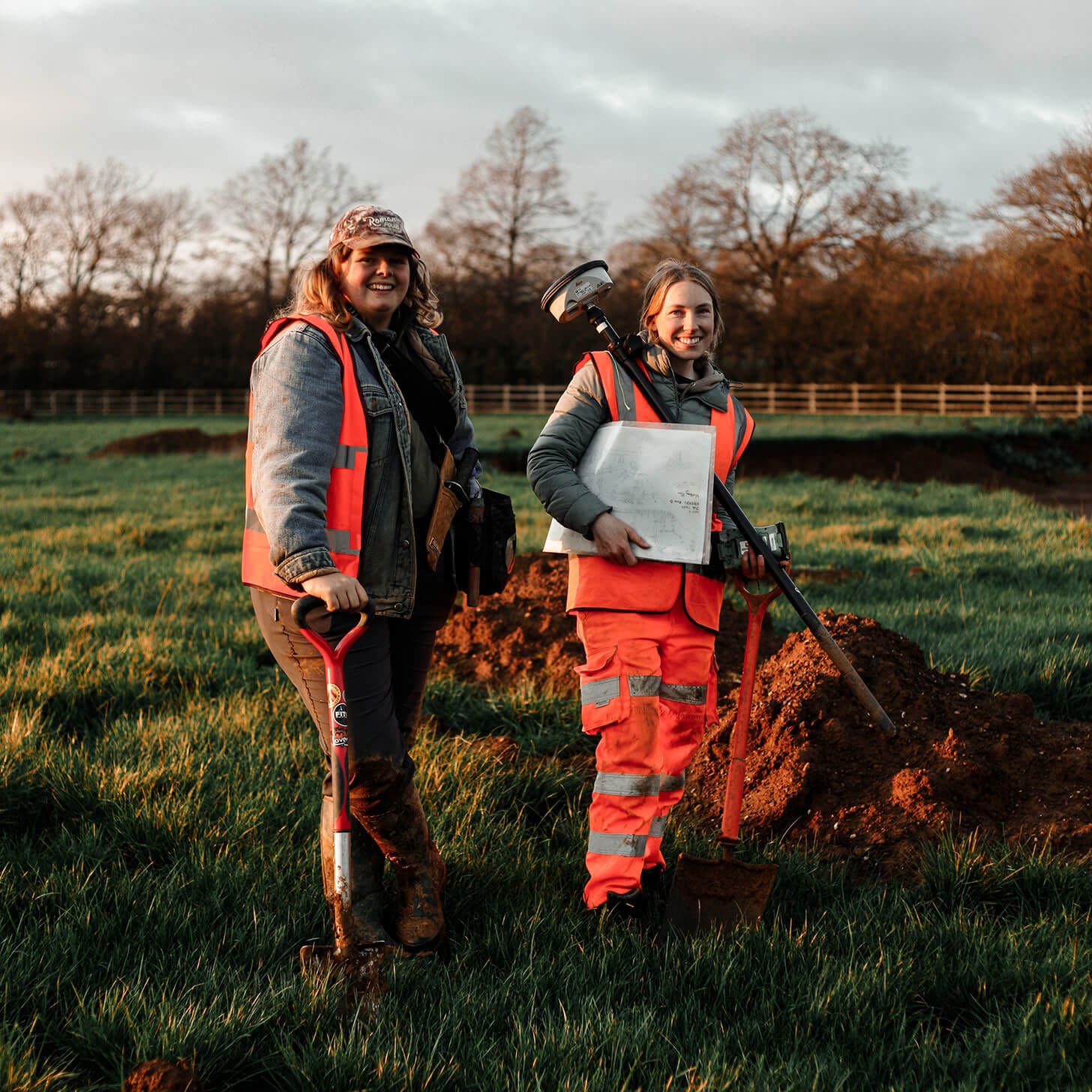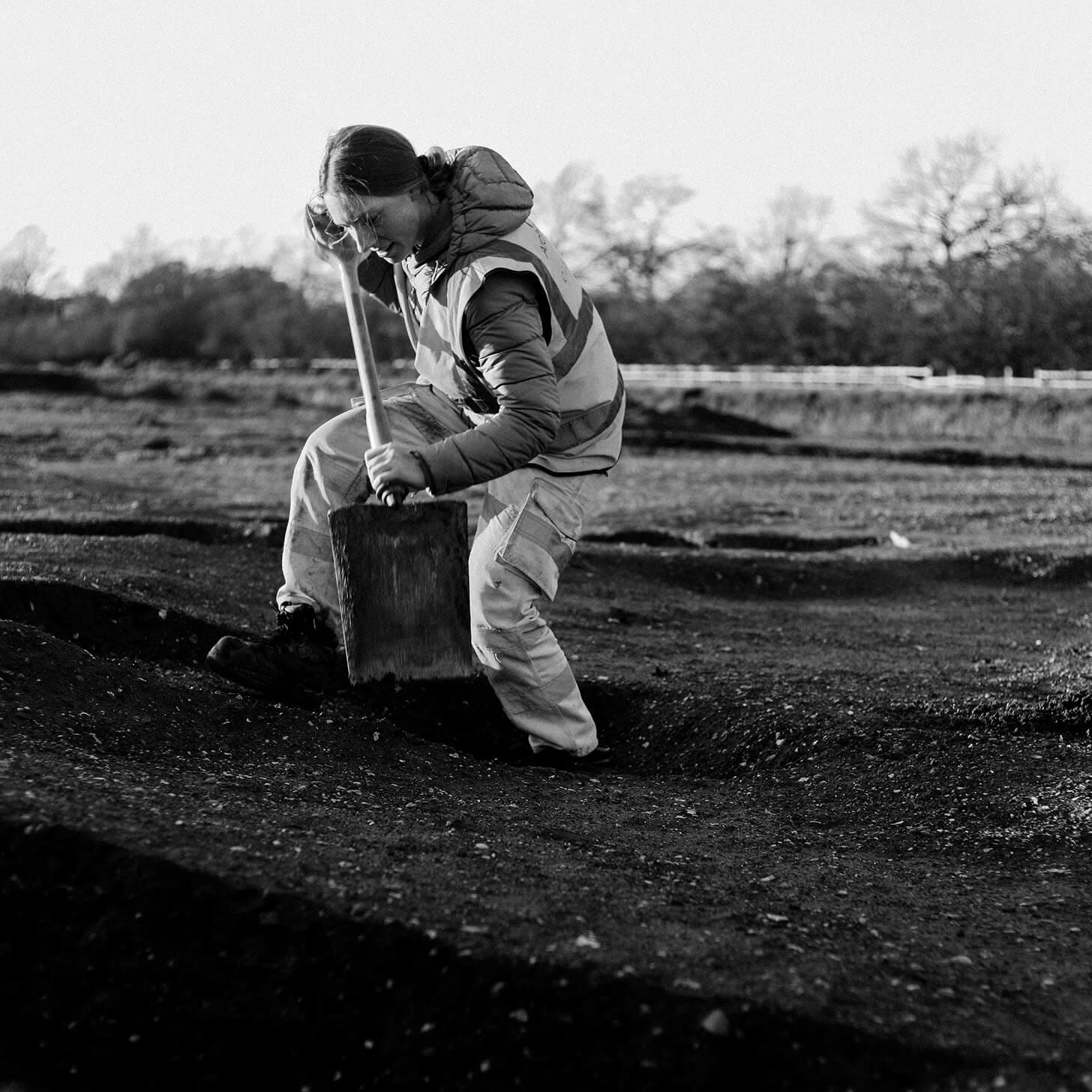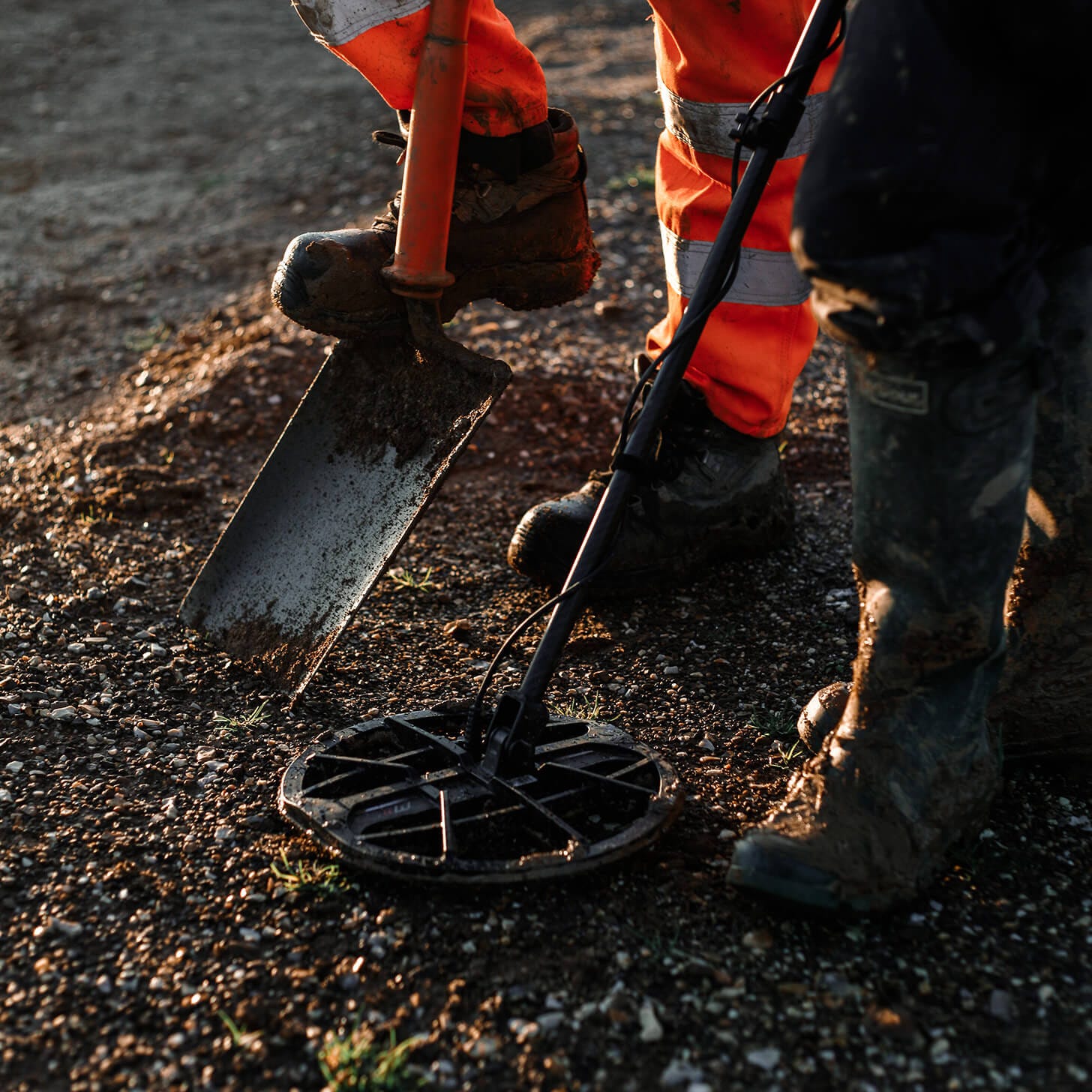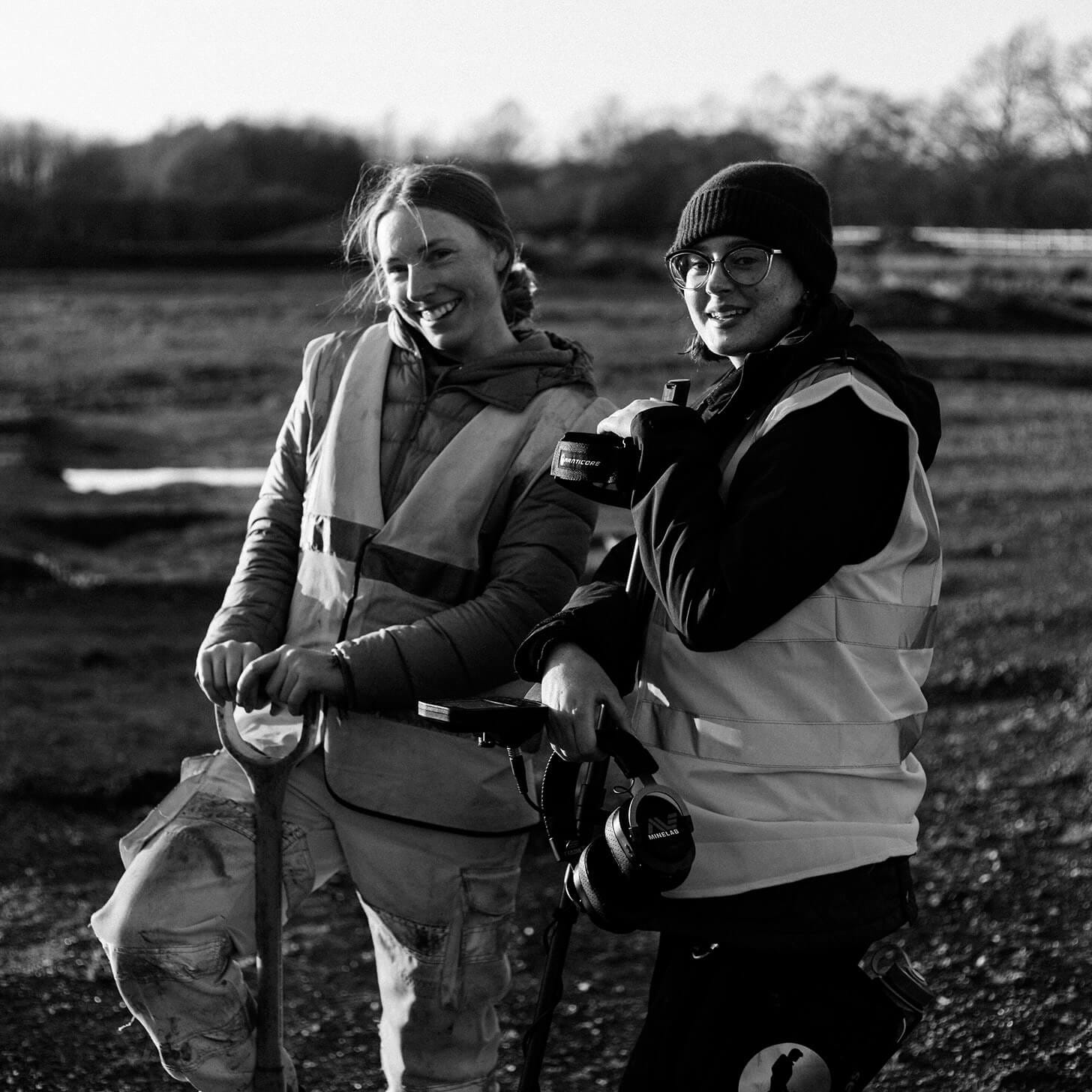This week, we got to play real-life Time Team, a childhood dream come true. Donning hi-vis jackets, we stepped into the shoes of a Commercial Archaeologist for the day—and not just any old shoes, ones that have actually made appearances on THE SHOW!?
Giselle Király
We’d like to introduce you to Giselle, commercial fieldwork project officer, human Osteoarchaeologist, and no stranger to your favourite archaeology TV Shows, often spotted on Time Team, Digging for Britain and History Hit.
Giselle has led fieldwork in Europe, Georgia and the UK, but as a human remains specialist, it’s no surprise that what gets her most excited on a dig is the emergence of a body, yet this isn’t always guaranteed! When asked to describe her ‘typical’ day in the field, her answer is virtually impossible as every day is different. She could be in the dirt cutting slots and excavating trenches, analysing human remains and completing paperwork or dropping everything and being summoned to the Time Team excavations at Sutton Hoo.
So when Giselle asks if you want to join her at a commercial dig for the day… you say YES!
Commercial Archaeology
Around 80% of all archaeological work happening in the UK comes from the world of Commercial Archaeology. Often known as developer-led archaeology, this is where archaeology commences as part of the proceedings to acquire planning permissions or development as opposed to Research Archaeology, where exciting sites are explored over a number of years after a vast amount of funding. The commercial side is more unknown, based on saving and recording what archaeology is on any site and in a much stricter time frame.
Where To Find Commercial Archaeology:
On quarry sites before quarrying commences
Before the construction of roads, houses and house extensions
At historic and important properties to monitor any developmental changes such as landscaping or plumbing
The Typical Jobs of a Commercial Archaeologist:
Ground penetrating radar before excavation
Excavation: digging ditches, cutting slots and opening trenches
Finds analysis
Site research and reports
Historic building monitoring and conservation
Even underwater archaeology prior to construction in the sea!
“If I ever get asked to describe my job in one sentence it would be: Digging holes that people have already dug and then refilling them” - Giselle Király
Iron Age Britain
In Britain, the Iron Age stretches from 800 BC to the Roman invasion of 43 AD; it was a time that saw iron-working technology brought across from the continent and subsequent population growth as a result - with the population estimated to exceed 1 million.
However, all that we know about the Iron Age in Britain comes from a small amount of historical evidence written by the contact of the Romans and Greeks with these peoples, limited evidence from a foreign perspective. Therefore, one of the most important ways of discovering more about these people of prehistory is through the archaeological excavation and understanding of the remains that they have left behind in our landscapes and under our soil.
The most visible remains of Iron Age Britain can be found in nearly 3,000 examples of Hill Forts, fortified sites that are believed to have been used for gatherings, trade, religious purposes, storage and defence. But beyond these substantial features, the rest of Iron Age Britain was rather small, limited to a scattering of individual farmsteads that would have only housed one or extended families. These farmsteads were often connected in community and identified collectively as one of several main tribes that governed sections of Britain; life would have been relatively simple - utilising new iron-tipped ploughs for agriculture, clearing forest land and digging the pits and ditches that defined their farmsteads.
The Site
Giselle very kindly invited us to join her on the excavation, as she and the team have so far not found a single metal artefact, and she is a firm believer that metal detecting, and archaeology should work hand in hand to help answer each other's questions and discover all of a site's potential.
“Metal detecting is an invaluable resource to archaeology and it should be a standard that detecting is incorporated into every site with potential for metal finds! Parallel to that, archaeology can answer questions detectorists create with their scatters of field finds. The two are naturally intertwined.” - Giselle Király
The Iron Age site is a very typical Iron Age settlement, one with large enclosures, roundhouses that would have contained an open-hearth fire to provide warmth, light and a way of cooking and a long pit alignment that was likely dug as a boundary.
Key Discoveries:
Burials
Excitingly for Giselle, the team has found two burials so far that date to the Iron Age occupation of this site, one adult and one older child. The analysis of these remains could provide important information about their diet, lifestyle, health and mortality.
Iron Age Boundary Ditches
These ditches are believed to have been dug as an evolution of the original pit alignment, however as this area is in a floodplain they were likely to have been silted up over time - information that is still contained in the layers of the soil and has even revealed that these ditches were recut in the Roman period showing that this site would have continued its occupation beyond Iron Age Britain.
The ‘Croissant’
This was one of the most unusual features discovered on the site and one that requires much further investigation. It’s a potential crescent-shaped barrow that has been flattened through later ploughing and so far it’s proving a bit of a puzzle.
Decorated Iron Age Pottery
The emergence of pottery displaying corded decoration is an important tool for helping to date the site and one that we helped with discovering several potsherds on our visit!
The ‘Croissant’ a crescent-shaped barrow.
An Eye-Opening Experience
Getting a glimpse behind the scenes at a real archaeological dig was truly eye-opening, and Giselle, we might have got the bug now! But the most shocking part of the dig was seeing the subsoils. What you don’t realise wandering around on the pasture and topsoil above is that underneath all of this, the subsoils contain a wealth of information just waiting to be seen.
There might not be any physical trace of archaeological features on the surface after being erased by centuries of ploughing, but they have still left their mark, appearing as darker or lighter areas in the subsoils. This is a result of ditches, pits or foundations containing a backfill, which has a lot more organic material and moisture than the surrounding untouched soil or from remaining walls and structures that have absorbed the moisture and acted as a barrier under the soil.
On this site it was like viewing a map, seeing from above the outlines of houses, tracing the routes of trackways and boundaries and even the ghostly outlines of barrows and enclosures. Never again will we be able to look at the surface of a field in the same way without imagining the world trapped below.
Giselle is also on Substack! Find her here:












